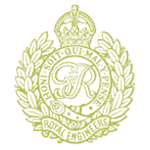Commemorated: | |||
| 1. Memorial: | Dottignies Communal Cemetery | I. B. 6. | |
| 2. Book: | The (1921) Masonic Roll of Honour 1914-1918 | Pg.124 | |
| 3. Memorial: | The (1940) Scroll - WW1 Roll of Honour | 49C GQS | |
Awards & Titles: | Military Cross | ||
Family :
Son of James Halley, of Glasgow; husband of Edith White Halley (nee Bird), of 36, Elsham Rd., Kensington, London.Education & Career :
Architect, F.R.I.B.A., Golders Green (1913).
Service Life:
Campaigns:
- The First World War 1914-1918, World-wide.
| Unit / Ship / Est.: 62nd Field Company |
| Action : The Final Advance in Flanders |
28 September - 11 November 1918. As the pressure mounted in other sectors the opportunity was seized to escape the confines of the Ypres Salient. Within five days the British Second Army had pushed the Germans back over the 1917 battlefield and were advancing on Courtrai. After action at Courtrai the advance continued into Belgium until the Armistice on 11th November.
Detail :
James Mitchell White Halley FRIBA, MC (1877-1918) skilled draughtsmen and innovative designer of the time He was considered a great loss to architecture and the recording of architectural history James Mitchell White Halley was born in Partick in 1877, the son of Joseph Smith Halley and Catherine White, and was educated at Glasgow High School. He was articled to Thomson & Sandilands in 1894, moving to the office of William Leiper as improver at the end of his apprenticeship in 1899. During this period he studied at the Glasgow School of Art and Royal Technical College under Francis H Newbery, William James Anderson and Charles Gourlay. In 1901 he moved to London to work as chief assistant in the firm of Niven & Wigglesworth, leaving them in 1903 when he found employment in the office of Edward Harding Payne. The following year he set off on an extended tour of Italy, Sicily and France from which he returned in 1905.
On 19 August of the latter year he married his first wife, Thyrza Harriet Lillian Butler, in London. In 1906 Halley worked briefly for William Flockhart before entering the office of Mervyn Edmund Macartney. He is believed to have been working in partnership with Ernest Godfrey Page c.1907, although this partnership must have been short-lived as he was once again working for Macartney when he was admitted LRIBA on 4 July 1910, his proposers being Macartney, Flockhart and Herbert Hardy Wigglesworth. He was still working in the same building as Macartney when he was elected FRIBA in 1914, proposed by Macartney, Edwin Alfred Rickards and John James Joass, although it is possible that by this time he was practising independently. Halley entered many competitions including The Hague Palace of Peace, where his entry was highly placed and the Mitchell Library, Glasgow, where he reached the final stage.
He had scholarly interests, contributing to the 'Practical Exemplar of Architecture' and the 'Architectural Review', of which he was assistant editor in 1909; and he won the RIBA essay prize in 1914 with 'The Rebuilding and the Workmen of St Paul's Cathedral' (RIBA Journal, 5 and 19 December 1914). He was engaged on a book on Piranesi when he was commissioned in the Royal Engineers late in 1914. He was wounded at Arras in 1917 and promoted major in the summer of 1918. That same summer he received the decree absolute of his divorce from his first wife on 24 June, and married Edith Butler on 6 August; but he was killed only two-and-a-half months later by a sniper when surveying the Scheldt for a bridging of the river on 24 October 1918. - DSA (Dictionary of Scottish Archiects) Architect Biography
Masonic :
| Type | Lodge Name and No. | Province/District : |
|---|---|---|
| Mother : | Sanctuary No. 3051 E.C. | London |
Initiated | Passed | Raised |
4th December 1913 | 5th February 1914 | 7th May 1914 |
"Killed in action 24th Oct 1918"
Source :
The project globally acknowledges the following as sources of information for research across the whole database:
- The Commonwealth War Graves Commission
- The (UK) National Archives
- Ancestry.co.uk - Genealogy, Family Trees & Family History online
- ugle.org.uk - The records of the United Grand Lodge of England including the Library and Museum of Freemasonry
Additional Source:
- Founder Researchers : Paul Masters & Mike McCarthy
- Researcher : Bruce Littley

